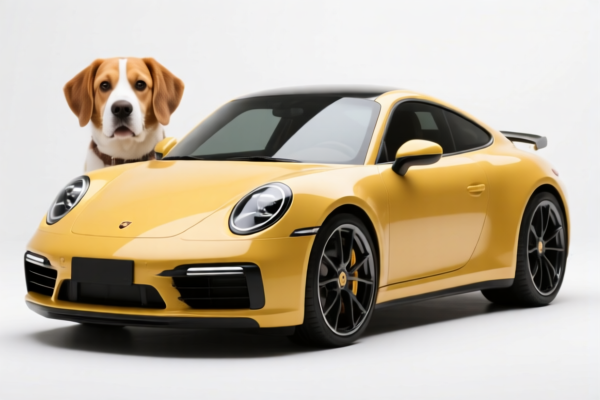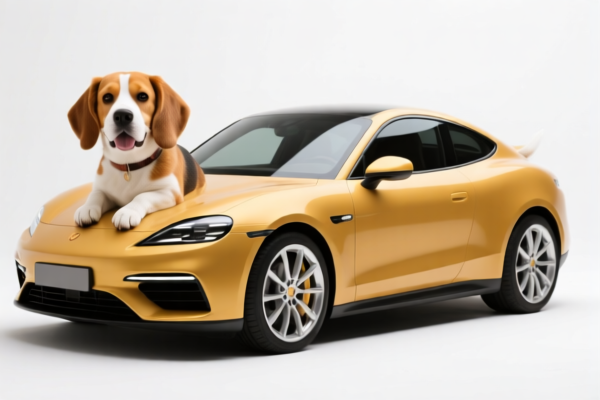| HS Code | Official Doc | Tariff Rate | Origin | Destination | Effective Date |
|---|---|---|---|---|---|
| 9403999061 | Doc | 55.0% | CN | US | 2025-05-12 |
| 3926903000 | Doc | 59.2% | CN | US | 2025-05-12 |
| 3926909989 | Doc | 42.8% | CN | US | 2025-05-12 |
| 3925900000 | Doc | 60.3% | CN | US | 2025-05-12 |
| 3925100000 | Doc | 61.3% | CN | US | 2025-05-12 |




Pet Ramp
A pet ramp is an inclined plane designed to assist pets, typically dogs and cats, with ascending and descending surfaces that would otherwise be difficult or impossible for them to navigate due to age, injury, or physical limitations.
Material
Pet ramps are constructed from a variety of materials, each offering different levels of durability, portability, and cost:
- Wood: Often plywood or solid wood, providing a sturdy and stable surface. May be covered with carpet or a textured coating for traction. Can be heavier and less portable.
- Plastic: Lightweight and easy to clean, often foldable for storage and transport. Durability varies based on the type of plastic used; higher-density plastics are more robust.
- Metal: Typically aluminum, offering a strong and lightweight frame, often combined with a carpeted or textured walking surface. Can be more expensive.
- Fabric: Often used as a covering for wooden or plastic ramps, providing grip and comfort. May be removable for cleaning.
Purpose
The primary purpose of a pet ramp is to improve a pet's quality of life by:
- Providing Accessibility: Allowing pets with mobility issues (arthritis, hip dysplasia, post-surgery recovery, etc.) to access furniture (beds, sofas), vehicles, or other elevated areas.
- Preventing Injury: Reducing the strain on joints and preventing falls when navigating heights.
- Maintaining Independence: Enabling pets to move around more freely without requiring assistance.
Function
A pet ramp functions by:
- Reducing the Angle of Ascent: The incline distributes the effort required to climb, lessening the stress on a pet's body.
- Providing a Stable Surface: A wide and non-slip surface offers secure footing.
- Distributing Weight: A well-constructed ramp supports the pet's weight evenly.
Usage Scenarios
- Indoor Use: Accessing sofas, beds, or raised platforms.
- Vehicle Access: Helping pets enter and exit cars, trucks, or SUVs.
- Outdoor Use: Navigating steps or other elevated areas in the yard.
- Post-Surgery Recovery: Facilitating movement during rehabilitation.
- Senior Pets: Providing assistance to aging pets with decreased mobility.
Common Types
- Folding Ramps: Portable and easy to store, ideal for travel or limited space.
- Adjustable Ramps: Allow for customization of the incline angle to suit the pet's needs.
- Stationary Ramps: Fixed in place, offering a stable and permanent solution.
- Multi-Fold Ramps: Offer increased length and stability when fully extended.
- Car Ramps: Specifically designed to fit the height and dimensions of vehicles.
- Steps with Ramps: Combine steps and a ramp for versatility.
- Tunnel Ramps: Incorporate a tunnel shape for added security and comfort.
Pet ramps are typically constructed from materials like plastic or cotton and are designed to assist animals in accessing elevated surfaces. Depending on the construction and capacity, different HS codes may apply.
Here are the relevant HS codes based on the provided information:
- 9403999061: This code covers “Other furniture and parts thereof: Parts: Other: Other: Other Other: Of cotton, cut to shape”. If the pet ramp is primarily constructed of cotton fabric, this HS code may be applicable. The total tax rate is 55.0%, comprising a base tariff of 0.0% and an additional tariff of 25.0%, increasing to 30.0% after April 2, 2025.
- 3926903000: This code applies to “Other articles of plastics and articles of other materials of headings 3901 to 3914: Other: Parts for yachts or pleasure boats of heading 8903; parts of canoes, racing shells, pneumatic craft and pleasure boats which are not of a type designed to be principally used with motors or sails.” While not a direct fit, if the ramp is designed for use on boats, this code could be considered. The total tax rate is 59.2%, with a base tariff of 4.2% and an additional tariff of 25.0%, increasing to 30.0% after April 2, 2025.
- 3926909989: This code covers “Other articles of plastics and articles of other materials of headings 3901 to 3914: Other: Other”. If the pet ramp is made of plastic and doesn’t fall into more specific categories, this HS code may be suitable. The total tax rate is 42.8%, consisting of a base tariff of 5.3% and an additional tariff of 7.5%, increasing to 30.0% after April 2, 2025.
- 3925900000: This code applies to “Builders' ware of plastics, not elsewhere specified or included: Other”. If the ramp is considered a plastic construction component not specifically categorized elsewhere, this code could be applicable. The total tax rate is 60.3%, with a base tariff of 5.3% and an additional tariff of 25.0%, increasing to 30.0% after April 2, 2025.
- 3925100000: This code covers “Builders' ware of plastics, not elsewhere specified or included: Reservoirs, tanks, vats and similar containers, of a capacity exceeding 300 liters (If the ramp has a container-like structure)”. If the ramp incorporates a container-like structure with a capacity exceeding 300 liters, this HS code may be relevant. The total tax rate is 61.3%, comprising a base tariff of 6.3% and an additional tariff of 25.0%, increasing to 30.0% after April 2, 2025.
It is important to determine the primary material of construction and the ramp’s specific function to select the most accurate HS code.
Customer Reviews
No reviews yet.